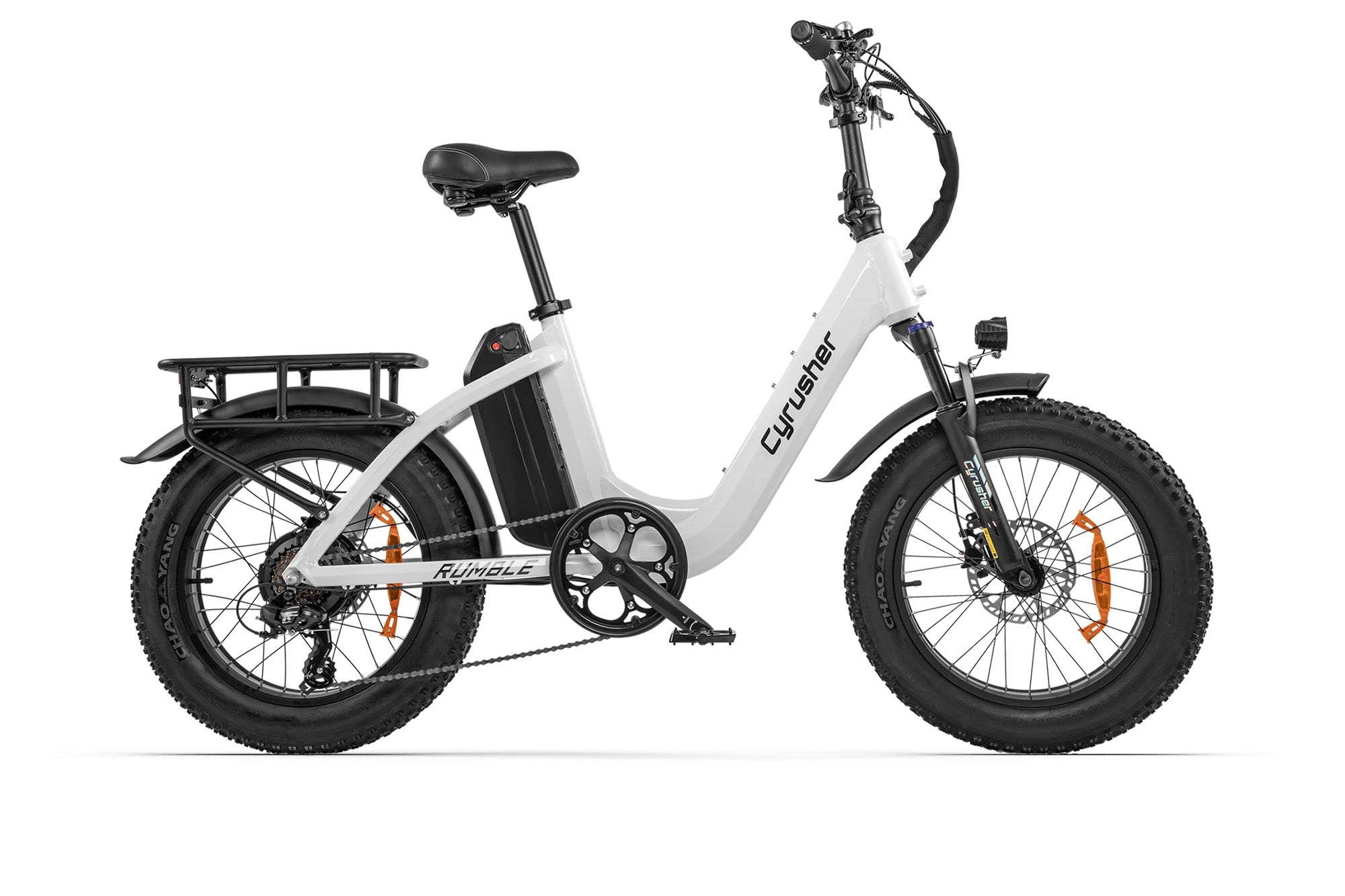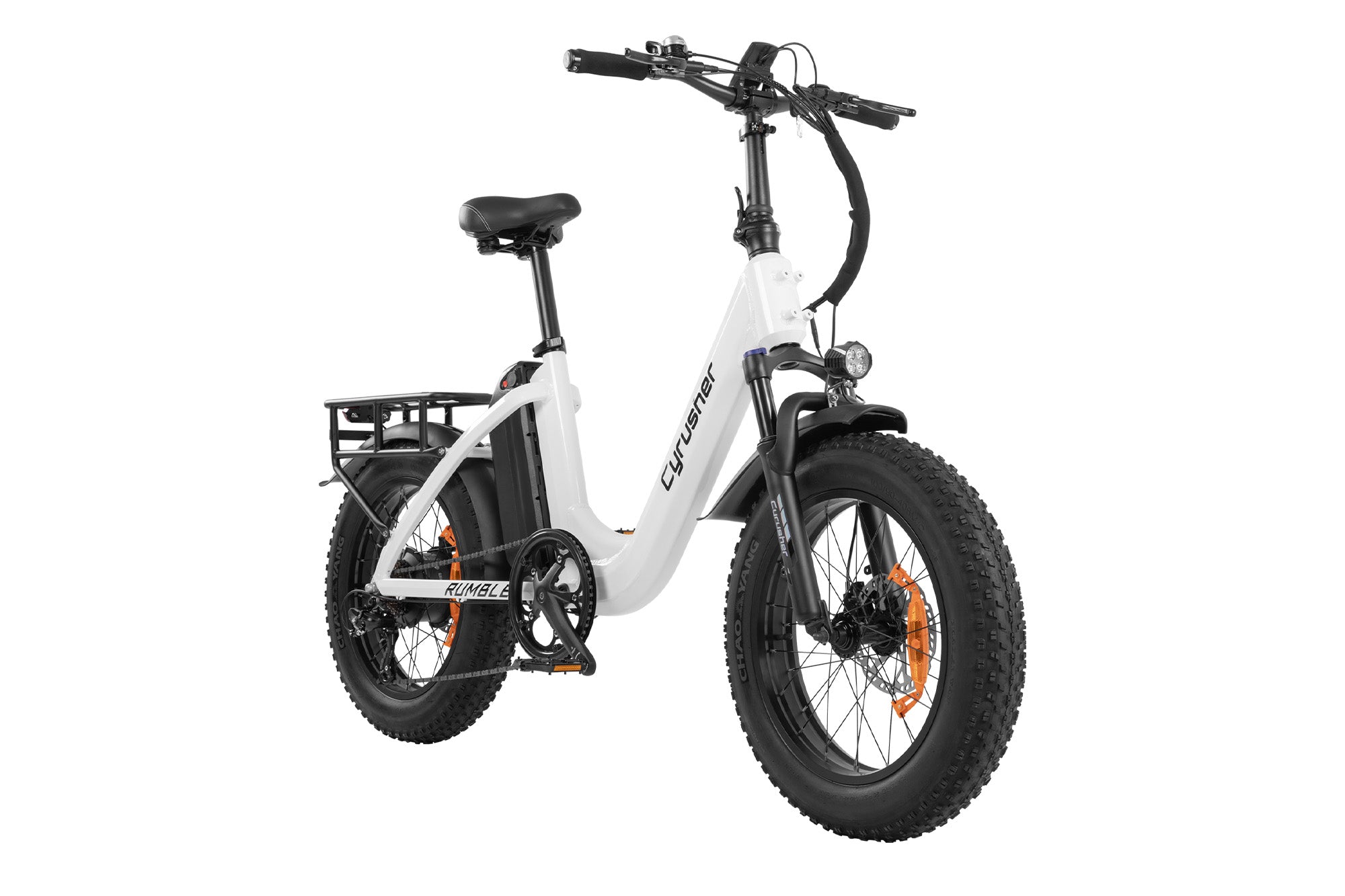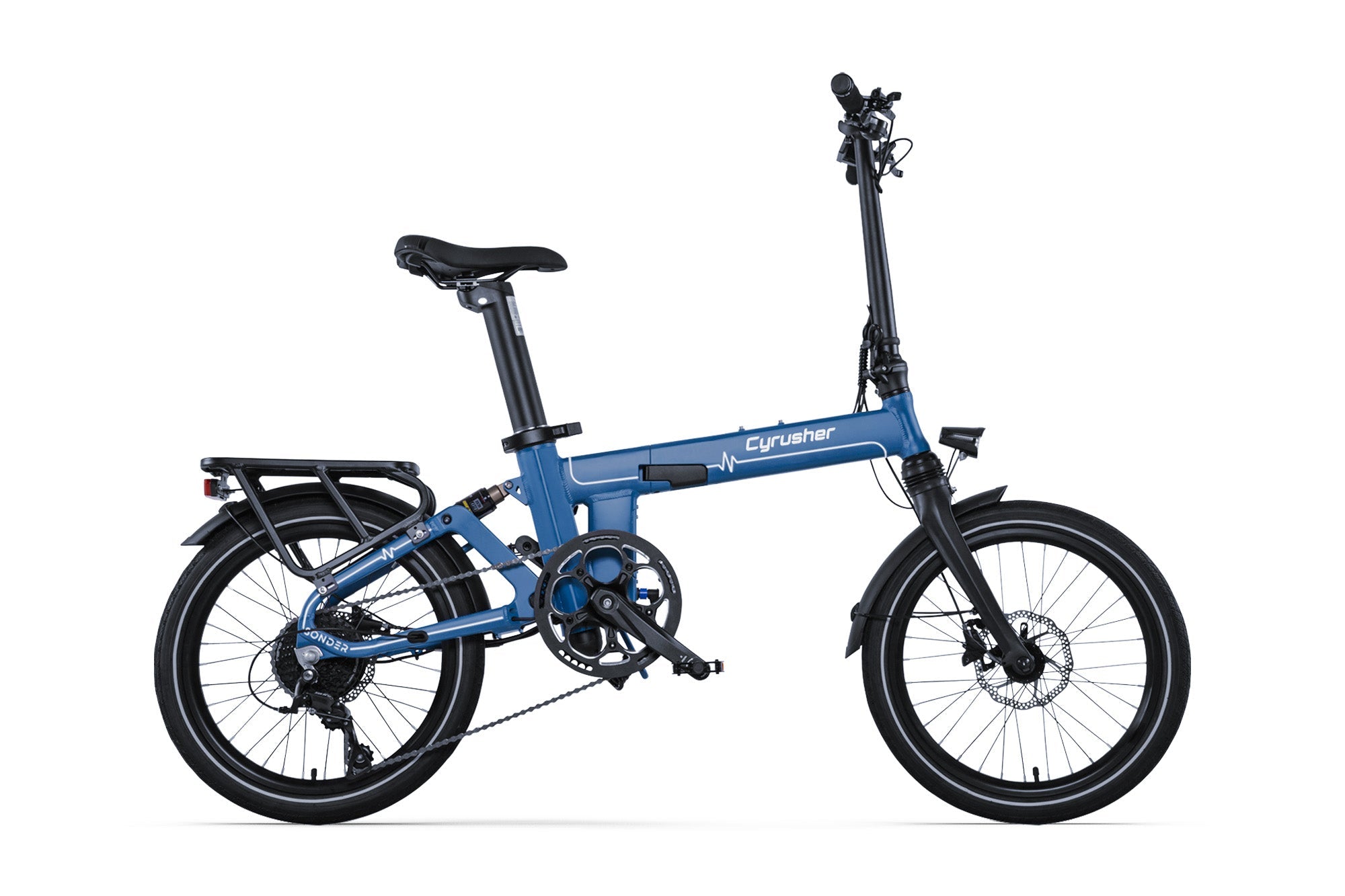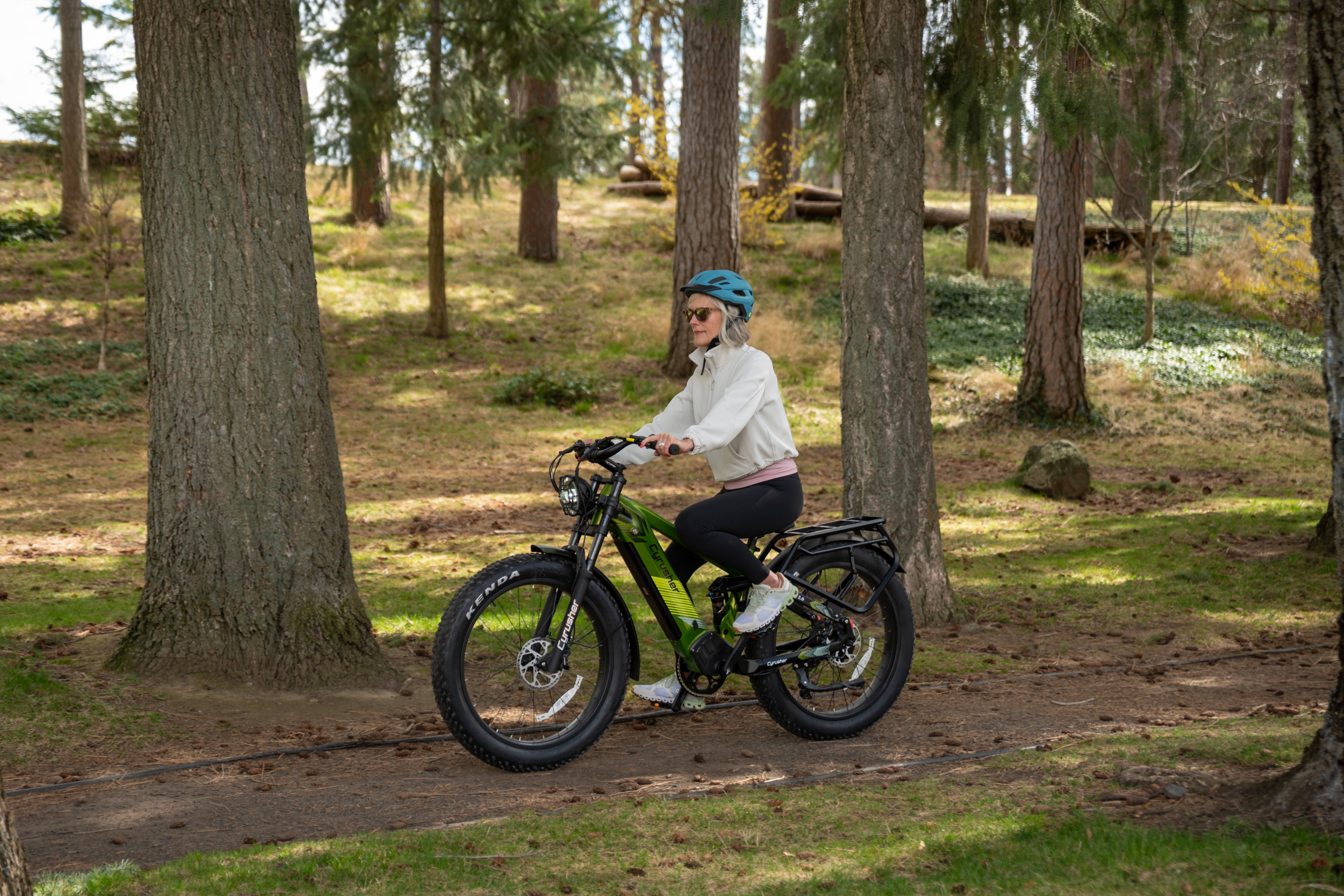Aging is an inevitable part of life, but we have control over how we age. As we grow older, everyday activities that once seemed effortless become more challenging. Physical challenges like stiff joints and an increased risk of conditions such as high blood pressure can leave middle-aged and older adults feeling less vital and less independent, leading to a deep sense of isolation. However, regular physical activity can effectively mitigate these effects. Cycling, as a low-impact and joint-friendly activity, can serve as a science-backed health intervention to promote an active, healthy, and independent lifestyle.
Please note that this article does not offer exercise advice. Before starting any exercise program, it is important to consult with a medical professional for personalized guidance.
The Science of Cycling and Aging
Aging brings significant physiological changes that affect bodily functions and exercise needs. As people age, daily life often slows down due to stiff joints that drain vitality. Research indicates that muscle mass decreases by about 3-5% each decade after age 40. By age 70, bone density typically drops by 20-40%, increasing the risk of osteoporosis, while muscle mass also declines by 20-40%. This loss of muscle mass leads to reduced flexibility in both the upper and lower limbs. As a result, simple daily activities like lifting objects or standing up from a chair become challenging.
| Parameter | Age Group | Annual Loss (%) | Gender Specificity | Key Findings | Source Studies |
| Bone Density Loss | 60-69 years | 0.6 ± 0.1 | Women | Progressive acceleration with age; weight stability reduces loss |
|
| 70-79 years | 1.1 ± 0.2 | Women | Physical inactivity amplifies loss by 180% vs active peers | ||
| ≥80 years | 2.1 ± 0.6 | Women | Thinner women (BMI <24) experience 40% faster bone loss | ||
| Postmenopausal | 3-4* | Women | Accelerated loss phase (20% over 5-7 years) | ||
| Muscle Mass Loss (Sarcopenia) | 50+ years | 1-2 | Both | Baseline sarcopenia progression |
|
| 60+ years | 1 | Both | Linear decline beginning at 3rd decade | ||
| 75+ years | 0.64-0.7 | Women | Accelerated loss with reduced physical activity | ||
| 75+ years | 0.8-0.98 | Men | 23% higher rate vs women in same age cohort | ||
| Muscle Strength Loss | 50+ years | 3 | Both | Strength declines 3 x faster than mass loss |
|
| 75+ years | 2.5-3 | Women | Impacts functional capacity for daily activities | ||
| 75+ years | 3-4* | Men | Associated with 40% higher fall risk |
To maintain vitality and combat decline, older adults should opt for low-impact exercises. The World Health Organization recommends that older adults engage in at least 150 minutes of moderate-intensity exercise per week to maintain fitness.
Cycling, whether on a road bike, stationary machine, or e-bike, is highly adaptable, making it perfect for this goal. Unlike running, cycling is low-impact, which protects joints while offering full-body benefits. Additionally, cycling can be adjusted to suit different riders' needs, reducing stress on other body parts and making it suitable for most middle-aged and older individuals.
A 2023 scoping review of 27 studies (Frontiers in Sports Medicine) concluded cycling meets 83% of WHO physical activity guidelines for seniors while addressing age-specific physiological declines. The NIH recommends cycling as first-line intervention for mobility-limited older adults in its 2024 Frailty Management Guidelines. Cycling can provide significant health benefits as a low-intensity aerobic exercise for middle-aged and older adults.
The Health Benefits of Cycling
1. Musculoskeletal Benefits
A 2016 study by the CDC revealed that over a quarter of adults aged 50 and older do not participate in any physical activity outside of work. This lack of activity, combined with aging, hinders the ability of middle-aged and older adults to age healthily. As we age, the body produces less joint lubrication, leading to stiffness that can interfere with daily activities.

Osteoarthritis is a prevalent disease in the United States, and a recent study shows that it will affect about one billion people worldwide by 2050. Osteoarthritis causes pain, stiffness, and swelling in the joints, commonly impacting the hands, hips, back, and knees. The incidence of osteoarthritis is increasing among middle-aged and older adults, often due to aging and reduced physical activity. Over time, midlife arthritis can impair mobility and function, making movements like walking and climbing stairs difficult. Choosing appropriate exercises to alleviate pain and manage the condition presents additional challenges.

The circular motion of cycling lubricates joints and reduces impact. The smooth pedaling motion promotes joint mobility and minimizes stress on the knees and hips while still providing muscle training benefits.
It has been shown that regular cycling can effectively improve joint health, reducing the likelihood of knee pain and arthritis. Studies reveal that cyclists are 17% less likely to experience frequent knee pain, 9% less likely to experience radiographic osteoarthritis (ROA), and 21% less likely to experience symptomatic osteoarthritis (SOA) compared to non-cyclists.
For older adults, cycling can enhance independent mobility, promote joint movement, and alleviate joint pain. Continuing to cycle offers even greater physical health benefits.
2. Cognitive and Mental Health
As we age, the brain's information processing capabilities naturally change, often leading to memory decline and the gradual development of cognitive impairment. Mild Cognitive Impairment (MCI) affects approximately 16% of individuals over 70. Neurological disorders can contribute to feelings of powerlessness, significantly impacting mental health over time.
Furthermore, physical aging and illness can cause considerable psychological distress, with physical pain frequently leading to depression and other mood disorders. For instance, about one-third of arthritis patients over 45 experience depression and anxiety. Individuals with chronic musculoskeletal conditions may also experience social isolation and reduced social engagement, potentially worsening the effects of mental health conditions.
Cycling can help middle-aged and elderly people connect with the world and combat feelings of loneliness and powerlessness. Outdoor cycling, in particular, allows them to engage with nature, effectively relieving anxiety. The act of cycling stimulates the release of endorphins, hormones known to reduce stress and anxiety. The rhythmic and meditative motion of pedaling also provides a calming effect, making it an excellent stress-reducing activity.
A 2021 study in the Journal of Environmental Psychology indicated that exposure to natural environments positively affects cognitive and psychological functioning. Connecting with nature through cycling can effectively alleviate emotional problems. Furthermore, exposure to sunlight during outdoor rides promotes the production of Vitamin D, which regulates mood and contributes to a healthier lifestyle.
A 2019 study examined the effects of outdoor cycling on cognitive function and well-being in older adults. The study found that both traditional cyclists and e-bike users experienced improved health after an eight-week cycling program. This intervention positively impacted their mental health and cognitive function compared to a non-cycling control group.
Regular physical activity, especially aerobic exercises like cycling, increases blood flow to the brain. This can enhance cognitive function and memory while reducing the risk of neurodegenerative diseases such as Alzheimer's.
Cycling effectively relieves anxiety and improves cognitive impairment through both physical and psychological mechanisms. It also helps the elderly stay socially connected, reducing loneliness and increasing vitality in their lives.
3. Cardiovascular Health
The prevalence of sedentary lifestyles presents significant health risks, increasing the likelihood of high blood pressure, diabetes, and cardiovascular disease. The Centers for Disease Control and Prevention (CDC) reports that nearly 70% of adults over 65 have high blood pressure. Chronic conditions like stroke, diabetes, and high blood pressure elevate the risk of cardiovascular disease. Cycling offers a way to help mitigate this risk.

During cycling, the body's demand for oxygen rises, prompting the heart to pump blood more efficiently. Exercise, like cycling, can produce long-term anti-inflammatory effects that benefit the cardiovascular system. Consistent cycling strengthens the heart and lungs, further reducing the risk of cardiovascular disease.
A study of Danish adults aged 50-65, published in the American journal Circulation, revealed that regular cycling for commuting or recreation correlated with an 11-18% reduction in heart attacks over a 20-year period. Even as little as 30 minutes of cycling per week can contribute to heart disease prevention.
A comprehensive review and meta-analysis published in 2019 further supported these findings, demonstrating that cycling is associated with lower rates of cardiovascular disease (CVD) and related risk factors. This study, encompassing over one million participants, showed that cyclists experienced significantly lower CVD morbidity and mortality compared to those who don't cycle.
Consistent cycling improves circulation, lowers blood pressure, and strengthens the heart muscle, all of which contribute to a reduced risk of CVD. Because cardiovascular health is integral to overall well-being and longevity, mitigating CVD risk enables individuals to enjoy a more active life with reduced discomfort from symptoms like dizziness and chest pain.
4. Balance and Fall Prevention
In the InCHIANTI study and others, a decline in mobility is evident starting in early adulthood, particularly during challenging tasks, with the decline accelerating significantly after ages 60-70. Age-related balance issues, coupled with decreasing bone density and muscle mass, place middle-aged and older adults at a considerably higher risk of falling. Approximately one-third of adults over 65 experience at least one fall per year, and these falls can result in severe injuries, such as fractures. This increased risk of falling due to declining balance can lead to a negative cycle where older adults, fearing a fall, limit their activities and avoid leaving their homes.

Cycling, as a mobility aid promoting independent travel, can serve as a means of transportation and encourage independent mobility for individuals with impairments. Consistent cycling engages the quadriceps, hamstrings, and calf muscles, which helps to maintain leg muscle mass and increase mitochondrial density. Increased muscle mass can contribute to improved balance and a reduced risk of falls.
A study published in PLOS One compared older cyclists to non-cyclists and discovered that the cyclists were significantly more physically active and displayed differences in balance-related metrics. This research suggests that cycling could be an effective way to improve balance and lower the risk of falls in older adults. Regular cycling exercise helps middle-aged and older adults improve their balance and leg strength, increase their stability, and regain the confidence to explore their surroundings.
5. Chronic Disease Prevention
As we age, changes in the body's cellular structure increase susceptibility to chronic diseases. Unhealthy lifestyle habits, such as poor diet and smoking, combined with environmental factors, can also contribute to the development of these conditions. Approximately 50% of middle-aged adults (50-65 years old) and over 80% of older adults (75 years and older) experience multimorbidity, meaning they have two or more chronic diseases simultaneously.
| Disease | Age Group | Percentage |
|---|---|---|
| Hypertension (2015-2016) | 40–59 | 33.20% |
| 60 and over | 63.10% | |
| Hypertension (2017-March 2020) | Men ages 65–74 | 71.80% |
| Men age 75 and older | 83.20% | |
| Women ages 65–74 | 73.70% | |
| Women age 75 and older | 84.10% | |
| Diabetes (2021) | 45–64 | 18.90% |
| ≥65 | 29.20% |
Cycling is an effective way to burn calories and boost metabolism, aiding in fat metabolism. Maintaining a healthy weight through cycling reduces the risk of obesity-related diseases, including conditions like high cholesterol. Furthermore, cycling increases insulin sensitivity, which helps regulate blood sugar levels and lowers the risk of developing type 2 diabetes.
A University of Minnesota School of Public Health study revealed that cycling just three times a week reduces risk factors for heart disease and diabetes by 20 percent.
| Condition | Risk Reduction | Study Evidence |
|---|---|---|
| Type 2 Diabetes | 27% | Lancet 2020 cohort |
| Colorectal Cancer | 16% | NIH-AARP study |
| Osteoporosis | 41% | DXA scan comparison |
Similarly, a French study demonstrated cycling's effectiveness in preventing chronic diseases and reducing premature mortality. The research estimated that consistent cycling prevents nearly 2,000 deaths and 6,000 cases of chronic disease annually in France.
The Ripple Effect of Cycling
For many older adults, decreased mobility can lead to a loss of independence. Cycling provides a substitute for independent travel, helping to maintain mobility and allowing people to run errands, visit friends or enjoy nature without having to rely on others.
The real power of cycling lies in its ripple effect on daily life. As muscles grow stronger, everyday tasks become easier—like moving a full laundry basket with ease. Improved balance allows for independent visits to stores. Healthier joints bring relief from pain when climbing stairs, bending to pet a puppy, or tending to the garden. Regaining control over small daily errands boosts confidence and empowers one to take charge of life. Cycling also fosters emotional well-being and self-acceptance, encouraging people to become active again and form new connections within their community.
Although cycling isn't a cure-all and can only alleviate certain life conditions, it always offers something to look forward to, especially when life is improving.
Practical Tips for Middle-Aged and older adults
Due to physical deterioration and limited mobility, middle-aged and older adults need to consider the following points when starting to ride in order to maximize the benefits of cycling:
- Choosing the right bike
Riding options are numerous and adaptable, with support for indoor stationary riding machines specifically designed as an exercise aid. Those who need to explore mobility tools can consider outdoor rides. Traditional bicycles are the most common means of cycling, with e-bikes and hybrids providing additional support for those with limited strength. Choose the bike best suited your needs.
- Safety First
Always consider safety while riding. Wear protective gear such as helmets and maintain proper riding position. When start riding, choose roads with minimal traffic to practice and reduce the risk.
- Start slowly
Consider your physical condition and make a scientific riding plan. Start with short, low-intensity rides, then gradually increase the time and resistance to build up your muscles.
- Listen to your body
Take breaks during the ride based on body feedback. If feel uncomfortable, stop training immediately and consult professional advice in time to decide whether to continue riding. Riding increases the consumption of energy, so pay attention to keep hydrated and replenish energy during riding.
Conclusion
The global trend of population aging is accelerating, and maintaining physical vitality among middle-aged and older adults has become a pressing concern. Cycling, as a low-impact exercise, has emerged as a scientifically proven way to provide health benefits. Far from a mere pastime, cycling is a potent health intervention, offering middle-aged and older adults a path to stronger joints, sharper minds, and resilient hearts. If you're feeling dissatisfied with your current life, try cycling to experience its positive impact and keep your expectations for life on the rise.





















Share:
How to Choose a Cargo EBike
How to Boost Your Mood Through Cycling